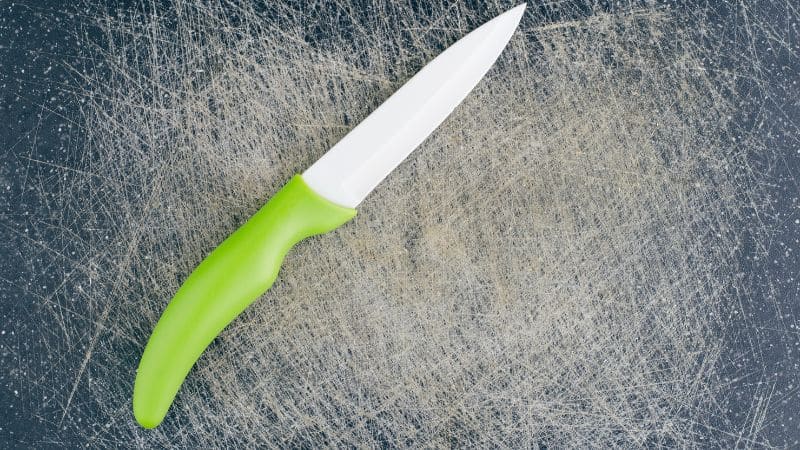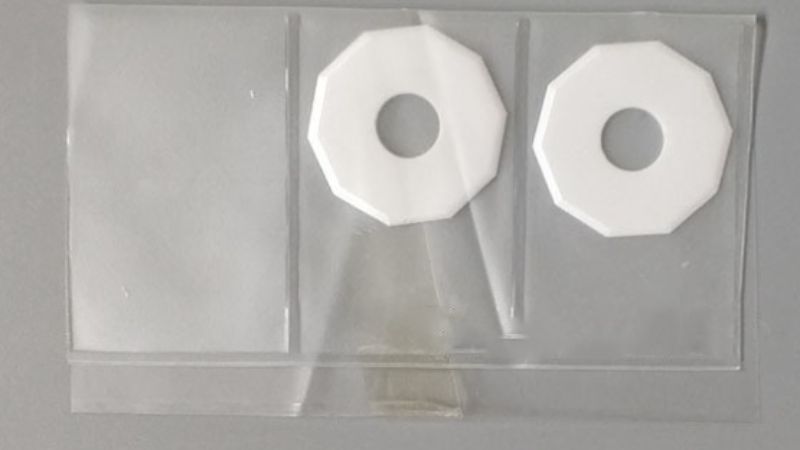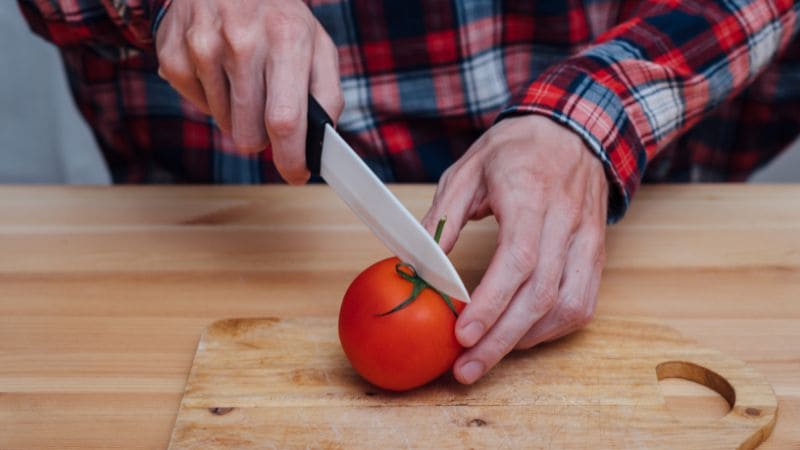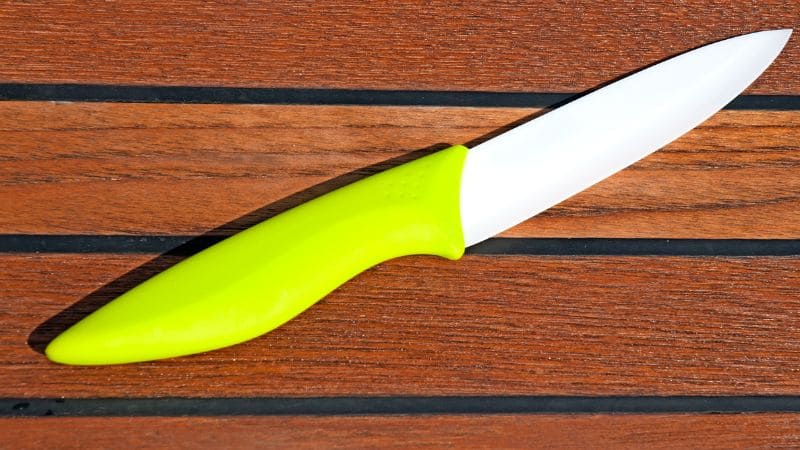Table of Contents
If you’re looking for a sharp, durable knife to help with your cooking, you may be wondering if a ceramic knife is a right choice. Ceramic knives are becoming more and more popular, but there are some things you should never cut with them. In this post, we will discuss 10 things that you should never cut with a ceramic knife!
The material of ceramic knives is brittle and can’t cut out ingredients such as frozen foods, acidic substances, bones, squash, watermelon, pineapple, and other hard material. Also, prevent it from falling from a high place, otherwise, the knife is easy to pump mouth, missing corner or broken. Though ceramic knives are extremely durable, they are not all-purpose.
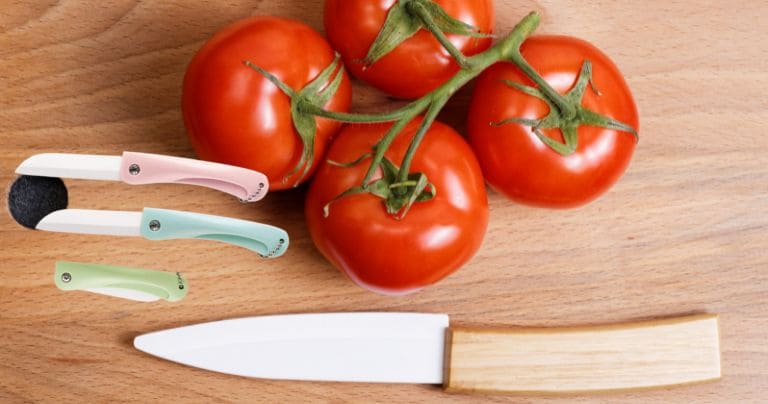
The Dangers of Cutting Frozen Foods with Ceramic Knives
It’s happened to all of us. You’re in a rush to make dinner and you need to chop up some frozer chicken breasts. So, you grab your ceramic knives and start hacking away. Bad idea. Ceramic knives are not meant to be used on foods. Doing so can be downright dangerous. Here’s why you should never cut frozer foods with a ceramic knife.
The Cold Can Cause the Blade to shatter suddenly and without warning
When ceramic blades get cold, they become much more fragility. So, if you’re using a ceramic knife to cut frozen food, there is a very real danger that the blade could shatter suddenly and without warning. This is not only dangerous for you, but it can also damage your countertops or cutting boards.
It’s harder to get a clean cut with a ceramic knife
Have you ever tried to cut a tomato with a butter knife? It’s not easy, is it? The same principle applies to cutting frozer foods with a ceramic knife. Because the blade is so brittle, it’s more likely to chip or crack when you’re trying to get a clean cut. This not only makes it harder to chop up the food evenly but also increases the risk of cuts and other accidents.
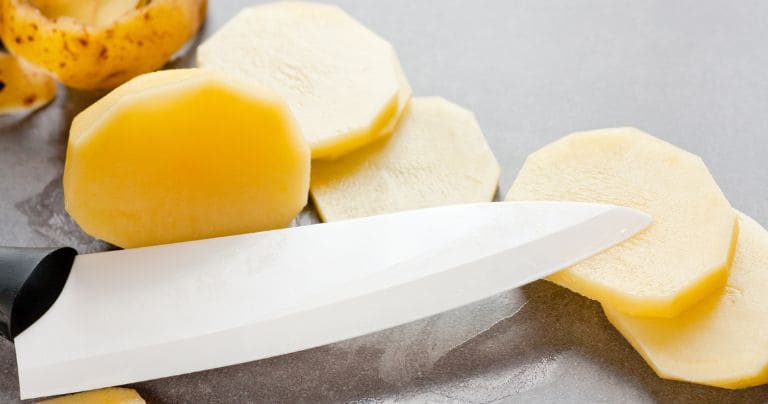
Frozen food is tough on blades – even stainless steel ones.
Frozer food is tough on blades – even stainless steel ones. So, if you’re using a ceramic knife, you’re putting even more strain on the blade, which could cause it to snap or break entirely. And we all know how expensive those things can be to replace.
Conclusion:
Ceramic kitchen knives might be great for slicing cheese or chopping herbs, but they’re not meant for cutting frozer food. Not only is there a danger that the blade could shatter suddenly and without warning, but it’s also harder to get a clean cut with a ceramic knife.
Therefore, when to use a ceramic knife and when to use an steel knife depends on the goal of the use.
So next time you’re tempted to use your ceramic kitchen knives on frozer foods, resist the urge and grab a different kitchen tool instead. Your knives – and your fingers – will thank you for it!
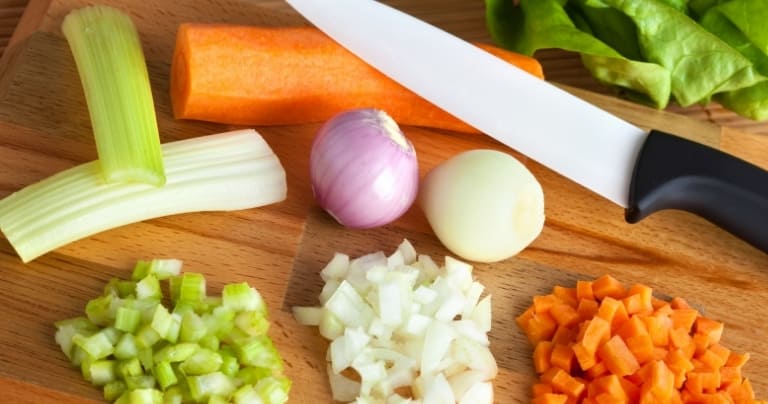
Why Ceramic Knives are Not Recommended for Use on Hard Materials
Ceramic knives have a lot of great qualities. They’re lightweight, they hold their edge well, and they’re non-reactive, which means they won’t transfer flavors from one food to another. However, there is one big downside to ceramic knives: they’re not recommended for use on hard materials like bone or other tough substrates.
Why Can’t Ceramic Knives Handle Hard Materials?
The main reason is they’re fragility. Unlike steel knives, which can flex without breaking, ceramic blades are more likely to chip or break if they’re used on something tough like bone. And once a ceramic knife chips or breaks, it can be very difficult—if not impossible—to sharpen it back to its original state.
What are the Risks?
So what happens if you do use a ceramic knife on a harder object like bone? The first thing that could happen is that you could damage the knife itself beyond repair. If you’re lucky, the knife will only chip; if you’re not, it could shatter into tiny pieces. And even if the knife doesn’t break, there’s a good chance that it will become dull very quickly when used on tough substrates.
Another risk is that you could end up injuring yourself. If the knife shatters while you’re using it, you could end up with cuts or puncture wounds from the broken pieces of ceramic. And even if the knife doesn’t break, there’s a risk that it could slip while you’re cutting and injure you that way.
Conclusion
While ceramic knives have a lot of great qualities, their brittleness means that they’re not well-suited for use on tough substrates like bone. Using a ceramic knife on harder materials runs the risk of damaging the knife and/or injuring yourself, so it’s best to avoid doing so.
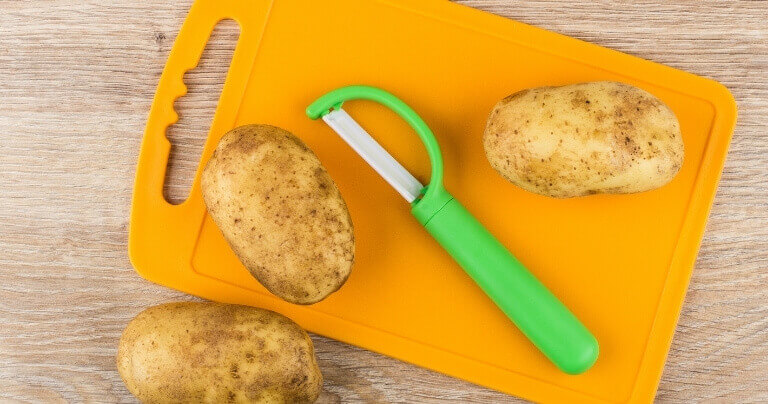
Cutting squash, watermelon, or pineapple with a ceramic knife? Don’t do it!
If you’ve ever been frustrated trying to cut a tough squash or a hard-as-nails watermelon with a regular kitchen knife, you may have thought about investing in a ceramic knife.
Ceramic knives are super sharp edge and can make quick work of delicate items like ripe tomatoes. However, there are some things that you should never cut with a ceramic blade – squash, watermelon, and pineapple are three of them. Keep reading to find out why not.
Ceramic Knives Are Hard And Brittle
Ceramic knives are made out of – you guessed it – ceramic. More specifically, they’re made from zirconium oxide material, which is a synthetic material that’s extremely hard and fragility. That means that while ceramic blades can be incredibly sharp, they’re also more likely to chip or break if they’re used to cut tough items. And trust us, squash, watermelon, and pineapple qualify as hard!
Sometimes it is difficult to cut something
What’s more, all that hardness also makes ceramic blades difficult to sharpen. So even if you do manage to use your ceramic knives blade to chop through a tough squash without chipping it, you’ll probably ruin the blade in the process and have to replace it entirely. Not only is that a waste of money, but it’s also bad for the environment.
Conclusion
So there you have it – three good reasons why you should never try to cut squash, watermelon, or pineapple with a ceramic knife. Save your ceramic blade for slicing softer foods like ripe tomatoes and leave the tough cutting jobs for a regular kitchen knife. Your wallet (and the planet) will thank you!
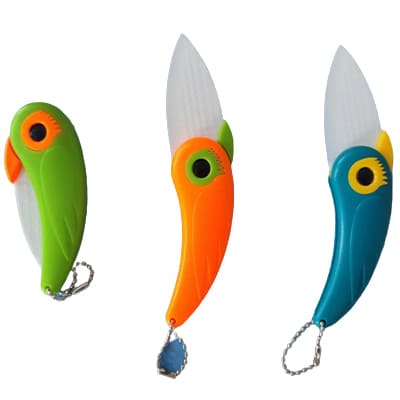
The blade of a ceramic knife will discolor over time if it’s used to cut acidic foods
Ceramic knives have many advantages over traditional steel knives. They’re lighter, they don’t rust, and they hold their edge much longer.
Disadvantages of Ceramic Knives
However, one disadvantage of ceramic knives is that their blade will discolor over time if used to cut acidic substances. This isn’t a major problem if you’re only cutting occasional acidic substances like lemons or tomatoes, but it can be an issue if you regularly use your ceramic blade to prepare meals that contain a lot of acidities.
If dropped, a ceramic knife may shatter into many pieces
Ceramic knives are fragility and can break if dropped. While steel knives will bend if dropped, ceramic knives will often shatter into multiple pieces. This means you have to be extra careful when using them.
Ceramic knives require more care than steel knives. Because they’re so fragility, you need to avoid knocking them against hard surfaces or putting too much pressure on them when cutting.
Can the ceramic knife be safe in the dishwasher?
Due to their non-porous nature, germs, and bacteria cannot permeate the blade. Hand washing is recommended for ceramic knives since they are not dishwasher safe. Blade chippage could occur if knocked or hit by other dishes.
Anything that goes into the dishwasher will get bumped around quite a bit. Between that and the high-pressure wash, you have a good chance of chipping the knife. Instead, just use a mild detergent and warm water.
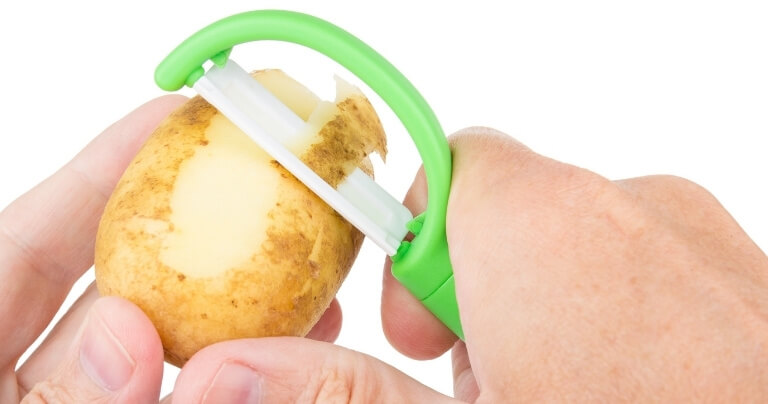
When slicing with a ceramic knife, use a wood or plastic cutting board.
While ceramic knives have their advantages, they’re not the best tool for every job in the kitchen. When it comes to cutting through frozen foods, acidic foods, bones, squash, watermelon, pineapple, and other hard material, leave the ceramic knife in the drawer and reach for a steel knife instead. With proper care, your ceramic knife will give you years of service—just make sure you use it on the right way.

